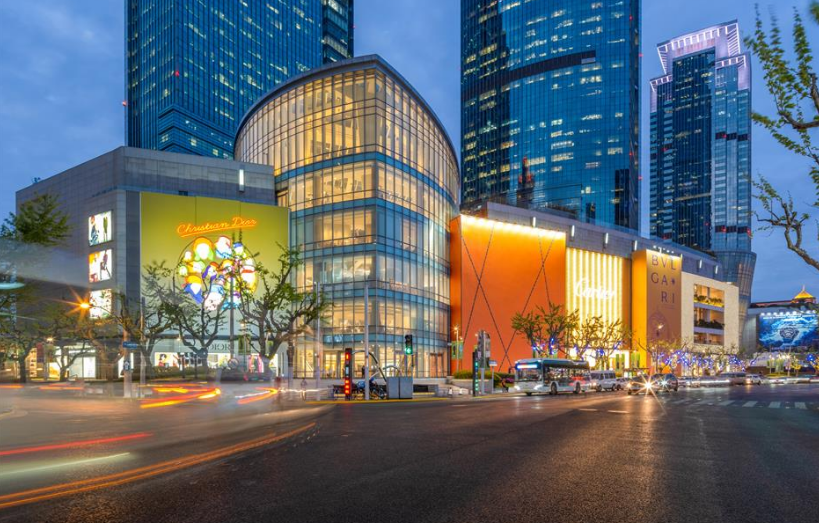
Jing'an sits in the heart of Shanghai. It represents the essence of the history and culture of the city, home to century-old buildings, big-name attractions, glitzy retail malls, and charming art galleries. Annual music and art events give the district a distinctive ambiance. In this series, we highlight the best of Jing'an.
October Keywords: A modern, international community par excellence
The iconic Nanjing Road W. is lined with imposing office buildings that contribute over 100 million yuan (US$13.83 million) in tax revenue alone. Following a major renovation, the century-old Zhangyuan Garden has become a sought-after location for MNC headquarters as well as a venue for global premieres and fashion shows. Renovated worker villages are getting new life. The spruced-up venue of the Second National Congress of the Communist Party of China is attracting a steady stream of visitors.
The current Jing'an District was created in November 2015 when the Zhabei and Jing'an districts merged. Since then, it has witnessed phenomenal growth, with district leaders, CPC members and the general public all working toward innovative development while sticking to the stated development strategy.
Jing'an will continue to be a leader in all areas, especially when it comes to building a modern, international community and focusing on high-quality development.
Leapfrog development
JC Plaza opened as planned in July of this year, injecting new momentum into the office building economy on Nanjing Road W.. Despite the volatile external environment, the district's commercial buildings continue to demonstrate their resilience.
By August this year, 62 office buildings in the district had each paid more than 100 million yuan in annual taxes, with nine of them doing so on a monthly basis.
In line with the principle of steady progress, the district has taken an active role in adapting to the implementation of relevant national strategies and fully utilizing the spillover effects of the China International Import Expo. This has led to the district's continued leadership in headquarters, global consumption, big data and creative culture.
High-quality update
The shikumen (stone-gate) complex in the Zhangyuan Garden has become one of the city's architectural gems, extensive and diverse, that have survived in relatively good condition to this day. The west part of the complex, reincarnated as a new set of commercial entities emphasizing the consuming experience, reopened recently to trend-setting consumers, giving a new commercial interpretation to a protected area rich in historical and cultural associations.
In recent years, the district has pushed for comprehensive urban quality elevation, as expressed in a well-choreographed development strategy centered on four core areas: Nanjing Road W., Suhewan, Daning and Shibei.
Nanjing Road W., in particular, will be a conglomeration of high-end services, with a high concentration of MNC headquarters. Suhewan will be dominated by commercial entities, financial services, pharmaceutical companies and galleries. Daning in the south will concentrate on cinematics, arts and video games, whereas the Shibei High-tech Park will concentrate on a digital transformation demonstration zone, blockchain and big data hub.
First-rate governance is required for a city to become top-class, as evidenced by the district's meticulous attention to detail in its efforts to make the city more livable – for residents and visitors alike.
Grassroots Party building
Given the number of commercial properties and regional headquarters in Jing'an, the spread of the Party organization's tentacles throughout the commercial property structure contributes to an exemplary, multi-dimensional governance regime. So far, 780 grassroots Party organizations have been established in over 200 commercial buildings, with over 13,000 Party members participating.
Plaza 66, which became the first office building to pay 10 billion yuan in tax in 2021, exemplifies successful quality development under Party leadership. Since the plaza's first Party branch opened in 2002, there are now a total of 23, with over 1,300 Party members.
Commercial properties strive to be spiritual beacons as well as wealth vantage points. With over 100 historical sites of revolutionary associations now juxtaposed with commercial highrises, the rich "red" legacy inspires workers today to march forward.
A city that feels for its people
Jing'an is working hard to build a "People's City" that meets everybody's expectations for better living conditions.
The district has been an undisputed leader in meeting the challenge of providing better living quarters for its residents.
For example, the Pengpu Xincun neighborhood was one of the first worker housing developments, but its facilities could no longer keep up with the times and have since undergone piecemeal renovations. When some elderly residents returned to their former homes after being temporarily relocated elsewhere, they discovered newly installed elevators, balconies, independent kitchens and toilets, among other amenities.
The district has also been proactive in experimenting with new elder care schemes, providing after-school care for children, and developing communities with easy access to grocery stores, sports facilities and breakfast.
Steeped in revolutionary culture
While Shanghai was the CPC's birthplace, Jing'an was a central area where the CPC was active in its early stages, with over 100 revolutionary associations. More effort is being made to excavate, protect and make good use of the district's abundance of "red" legacy.
Answering the mandate to lead with advanced culture, Jing'an is also providing its residents with high-quality cultural products, as evidenced by its ambitious action plan for 2018-2020, which aims to build a public culture service infrastructure commensurate with its status as a core area in a global metropolitan.
Given the district's rich endowment in "red" culture and uniquely Shanghai cultural tradition, Jing'an has pursued a development strategy that prioritizes historical-cultural preservation while maintaining the district's function as a modern city. The result of the effort was the "readable architecture" demonstration zone.
With the residents' increased awareness of civic virtues, it's no surprise that the district has been recognized as a "civilized city" district on a national scale for five straight years.




 A single purchase
A single purchase









